By Chuck Lyons
Snow flurries swirled out of the darkness over the Baltic Sea. Chunks of ice floated on the water, and lookouts shivered at their posts. The German ship MV Wilhelm Gustloff plowed through the choppy water, her cabins, decks, saloons, and even her drained swimming pool jammed with refugees.
It was the night of January 30, 1945, and disaster awaited her.
On land, Soviet armies, enraged by earlier German atrocities, were moving into Poland and Prussia from the east, avenging themselves against the military personnel and civilians they met. Fleeing before them, refugees were streaming into the German-held Baltic ports, clogging the docks, and mingling with the wounded soldiers left by German ambulance trains. Horses that had pulled the cars that brought them and dogs that had tagged along were abandoned and wandered through the city. The roads and railways to the west were regularly being cut.
The only way out was by sea.
The Gustloff along with other liners, fishing boats, cargo ships, pleasure craft, and other vessels had been pressed into service to evacuate these refugees and military personnel, military technicians, and wounded soldiers in an operation that has been called the German Dunkirk.
But the Gustloff would not make it.
Not long after she began her journey west, she was spotted by the Russian submarine S-13, which launched three torpedoes. All three hit the Gustloff, and within an hour she sank taking down with her as many as 9,500 people. It is the largest known loss of life of any sinking in maritime history, a loss of life more than three and a half times the total of those in the sinkings of the Titanic and the Lusitania combined.
The Gustloff in Operation Hannibal
From January to May 1945, as the Red Army advanced from the east, German refugees, military and civilian,were being evacuated through German-held ports on the Baltic Sea. Included among them were potential U-boat crews that had been training in the Bay of Danzig, wounded soldiers from the Eastern Front, Nazi officials, military families, and other civilians.
The evacuation, codenamed Operation Hannibal, was under the control of Admiral Karl Dönitz, who later succeeded Adolf Hitler as head of Nazi Germany. In that role, Dönitz would sign the Allied terms of unconditional surrender on May 8, 1945.
In January, however, he had taken charge of the evacuation and had requisitioned ships of all kinds, including 25 substantial cargo ships and 13 liners. One of those liners was the MV Wilhelm Gustloff. The ship had been built as the flagship of the German Labor Front and had been used by its Strength Through Joy organization to provide recreational and cultural activities for German functionaries and workers and to serve as a propaganda tool touting the glories of German power.
She was 684 feet long, 77.5 feet wide, weighed 25,484 gross tons, and could accommodate 1,465 passengers in 489 cabins. She was launched in May 1937 and was named after Wilhelm Gustloff, the head of the Nazi Party in Switzerland, who had been assassinated in 1936. Gustloff had been an ardent supporter of Hitler almost from the beginning of the latter’s rise to power and came to be considered a Nazi martyr after his assassination.
The Gustloff had been pressed into service as a transport ship during the Spanish Civil War, was later converted to a hospital ship, and in 1940 was converted again, this time to a barracks ship for U-boat trainees in Gdynia, Poland, on the Bay of Danzig.
By early 1941, the Soviet advance westward had freed the Navy’s submarine fleet, which had been bottled up in Leningrad and Kronstadt. The subs surged into the Baltic Sea and the Gulf of Finland with orders to attack any shipping they encountered. The Germans, however, did not consider the submarines a menace, believing they were few and badly handled. A greater danger, the Germans believed at the time, came from British torpedo planes and bombers as well as from mines.
“A Safe, Comfortable Trip”
The Gustloff’s original Operation Hannibal assignment was to carry to safety the 2nd Training Division of submarine recruits, men who had bunked on her during training. She was also to carry a number of women auxiliaries, some of whom had served in antiaircraft and artillery positions to free men for the front lines, and some wounded soldiers.
“We considered the Wilhelm Gustloff a safe, comfortable trip. It was for this reason that it became the first official evacuation ship for our girls,” Wilhelmina Reitsch, who was in command of the 10,000 female naval auxiliaries in the area, later said. “Because road and rail transport was so dangerous at the time, it was considered best to send these girls on the Gustloff. The auxiliaries were all between 17 and 25 years old. We carefully sifted through the auxiliaries and gave seaborne priority to those who had family or other responsibilities.”
As the ship awaited her orders to load passengers and leave Gdynia, there were daily bombing raids on shore, and the city’s electricity and water systems had broken down. The dock area was jammed with refugees and wounded soldiers trying to escape to the West and cluttered with horse-drawn covered wagons that had brought them to the docks.
“There must have been 60,000 people on the docks,” Walter Knust, the Gustloff’s second engineer, later said.
When the ship’s gangways were finally let down, refugees charged the ship trying to get aboard, fighting for a place on what they considered the only hope they had of finding safety. The ship was finally pulled a few yards away from the dock to stop the rush, and those with precious boarding passes were taken by ferry to the far side of the ship and up a guarded gangway.
Up to 10,582 Crew and Passengers on the Gustloff
About 1 pm on January 30, the Gustloff cast off. Aboard were 6,050 people: 173 crewmembers, 918 naval officers and men, 373 women’s naval auxiliaries, 162 wounded soldiers, and 4,424 refugees, including numerous women and children. It was windy and cold with hail bombarding the deck and the few passengers hardy enough to be outside. Bursts of snow mixed with the hail. Hunks of ice could be seen on the surface of the sea.
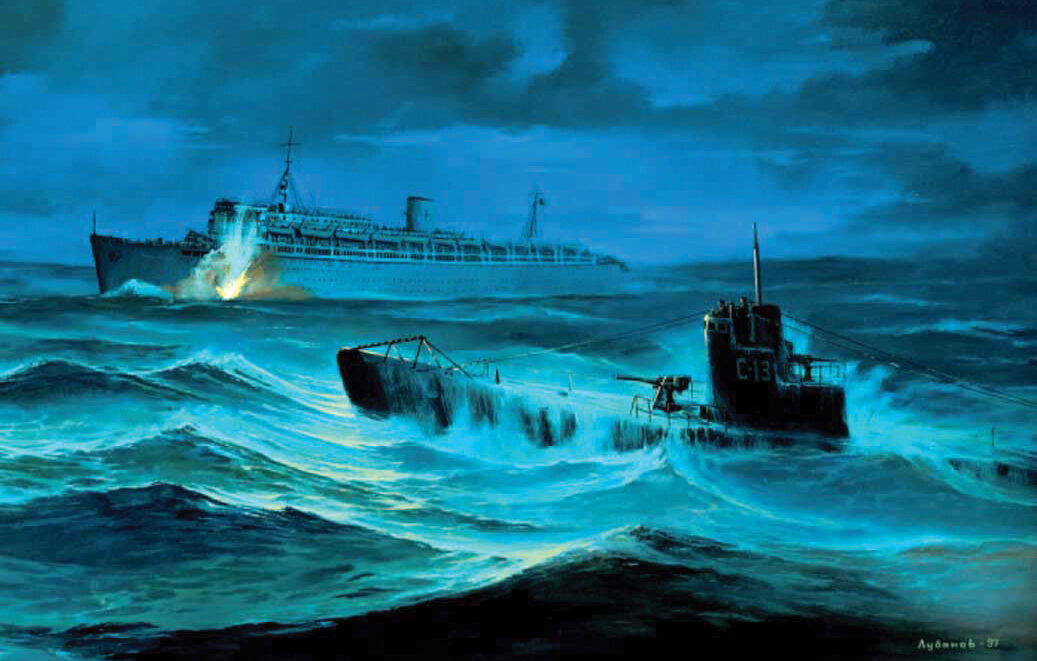
Lifejackets had been provided for all, but there were not enough lifeboats. Over the years, as the ship stood at the dock serving as a barracks, a number of the boats had been borrowed for other uses around the harbor. Lifeboats and rafts aboard the Gustloff could, if the need arose, accommodate only 5,060 people.
The ship was forced to stop almost immediately after casting off, however, when it was surrounded by a flotilla of small boats filled with refugees pleading to be picked up. Some women were holding up their children. Giving in to the pleading, the Gustloff’s officers ordered boarding nets to be dropped from the ship, and refugees scrambled aboard. No one bothered to count them, but radio officer Rudi Lange later said, “I think I remember being told by one of the ship’s officers to send a signal that another 2,000 people had come aboard.”
That figure was probably an estimate at best, but if close it sent the Gustloff’s complement to about 8,000 people. Other investigators, however, have claimed that number is actually quite low and estimated that those aboard totaled as many as 10,582 passengers and crew. The exact number will never be known.
The Gustloff then left Gdynia harbor accompanied by the passenger liner Hansa, which was also filled with civilians and military personnel, and with two torpedo boats to serve as a meager escort. The Hansa and one of the torpedo boats soon developed engine problems, however, and were forced to turn back.
A Legitimate Target of War
Over the years since the sinking, historians have argued about whether the Gustloff was a legitimate war target and whether her sinking should be classified as a war crime. Despite the wounded men on board, the Gustloff was not legally a hospital ship. She was armed with antiaircraft weapons and was also carrying a sizable number of military personnel. In addition, she was not marked as a hospital ship. She was a legitimate target.
Oddly, she also had two lead captains, one civilian and one military.
The military commander, Lt. Cmdr. Wilhelm Zahn, a submariner, argued that the ship should stay in deep water and make as much speed as possible either on a direct course or, preferably, zigzagging. He was overruled by the senior civilian captain, Friedrich Petersen, who argued that the ship could not maintain her top speed for long and was too large to hold a zigzag course. In addition, the ship was informed by radio of a number of German minesweepers in the area, and Zahn recommended turning on the ship’s green and red navigation lights to avoid a collision in the dark. German intelligence had already informed the Gustloff that there were no known Soviet submarines or surface ships in the area.
That report of no submarine activity was wrong, and the running lights would make the Wilhelm Gustloff easy to spot in the dark.
Meanwhile, the crowded conditions below decks had overwhelmed the ship’s ventilation system, making it oppressively hot. To make themselves more comfortable, people began removing their lifejackets.
As the ship sailed 15 to 20 miles off Leba, Poland, the Soviet submarine S-13 was prowling the area, and its commander, Captain Alexander Marinesko, was preparing to slip into the Bay of Danzig itself in hopes of finding targets.
“I decided,” he later said, “that I would bring the war to them.”
As the submarine headed for the bay, however, Marinesko noticed the running lights of the Gustloff and resolved to attack her on the surface, slipping close on the shore [port] side of the ship to fire torpedoes with greater accuracy. Snow flurries and clouds obscured the moon and helped hide the silhouette of the submarine against the darkness of the shore.
“They would not expect an attack from that direction,” Marinesko remembered. “Their watch would be concentrating on looking out to sea.”
The S-13 worked itself around the ship and to fewer than 1,000 meters from the Gustloff. The torpedoes were set to run three meters below the surface. Marinesko fired.
The Gustloff Hit
Before leaving on patrol, S-13’s Petty Officer Andrei Pikhur had painted slogans on the boat’s torpedoes. These torpedoes ran silently toward the Gustloff with the first, which had been labeled “For Motherland,” striking the Gustloff near the bow. The second torpedo, marked “For Soviet people,” hit just ahead of amidships, and the third torpedo, “For Leningrad,” struck the engine room below the ship’s funnel, cutting off electrical power. A fourth torpedo, “For Stalin,” hung up in its tube.
The Gustloff lurched to starboard and then settled to port and began listing. Her nose was down. At first, some of the officers thought the ship had hit a mine, but Zahn, himself a submariner, realized the ship had been hit by three torpedoes. The engines had been knocked out, and the ship’s telephone and public address systems were down. Those lucky enough to have cabins were able to quickly get out on the slanting deck, but below people were screaming and running around while alarm bells and sirens bellowed. Water poured into the ship’s corridors, and panicked people waded through first knee-deep and then thigh-deep streams. Anyone who fell was trampled. The wounded and the many pregnant women aboard, lacking mobility, were trapped below.
Those who made it to the boat deck fought to get on the few lifeboats. Others jumped into the water. Many of the davits holding the lifeboats in place were coated with ice, and the inexperienced crew struggled to knock them free and launch the boats. Others boats capsized as they hit the water, dumping those aboard into the freezing Baltic, or snarled when being lowered, spilling their passengers.
Sinking in the Baltic Sea
Meanwhile, the ship’s list to port continued to grow, and people began to slip and slide across the wet and icy deck into the water. Ironically, the PA system had been quickly repaired, and messages meant to reassure the panicked passengers continued to sound.
The main radio system was not operating, and water was pouring into the engine room. An emergency transmitter, which had a range of only 2,000 meters, was pressed into service, but it could not reach the naval headquarters. Its messages were picked up by the escorting torpedo boat, which then relayed them on its more powerful transmitter. But it transmitted the messages for help on a frequency reserved for warships. Valuable time was thus lost in notifying potential rescue ships.
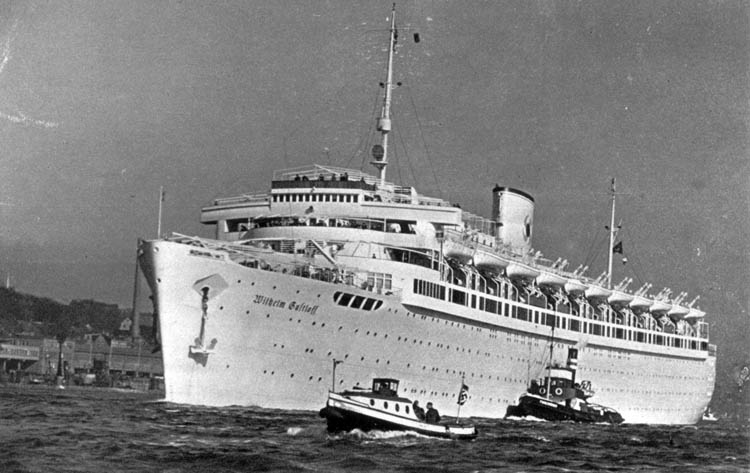
Finally, the great ship’s bulkheads and watertight doors gave way under the pressure of the water pouring into her, and she turned over on her port side, spilling those people still on the lower promenade deck against the windows, then out into the Baltic as the glass gave way. Others were caught and drowned.
On the bridge, 45 minutes after the torpedoing and with the ship listing 25 degrees, Zahn was overseeing the destruction of the ship’s papers when steward Max Bonnet, wearing his white jacket, politely appeared with a tray and glasses offering the officers on the bridge “a final cognac.”
The bridge officers drank their cognacs and returned to work. Shortly after that, the ship began her final slide to the bottom. Her boiler exploded, somehow reactivating her generators and lights as she slipped beneath the waves.
“Suddenly it seemed every light in the ship had come on,” said passenger Ebbi von Aydell, who had been lucky enough to get aboard one of the lifeboats. “The whole ship was blazing with lights, and the sirens sounded out over the sea.”
Another witness, Walter Knust’s wife, Paula, also watched the Gustloff’s last moments from a lifeboat.
“I could clearly see the people still on board clinging to the rails. Even as she went under they were still hanging on and screaming. All around us were people swimming or just floating in the sea. I can still see their hands grasping at the sides of our boat,” she remembered.
7,000 to 9,400 Deaths
In less than an hour, the Gustloff was gone, sunk in 144 feet of water. The Gustloff’s escort boat and other ships in the area, including the German cruiser Admiral Hipper, converged on the area and began bringing aboard as many of the Gustloff’s survivors as they could.
In all, 1,063 people were rescued, including both of the ship’s captains, but some of those rescued died later. In the panic that had followed the torpedo attack, a number of people were trampled and killed, and others were killed outright by the three torpedo blasts. The majority died, however, in the frigid Baltic water. The air temperature that night was no higher than 14 degrees Fahrenheit, and ice floes were forming on the surface of the sea. The actual number killed, like the actual number aboard the ship, is unknown but estimates range from about 7,000 to as many as 9,400 people.
Depth charges were also fired, which may have killed some of the people floating and swimming in the area. The sudden movements of some of the rescue ships trying to evade the submarine may have killed others.
The ships took many of those rescued west to Sassmitz on the German island of Rugen off the Pomeranian coast. There they were met by the Danish hospital ship Crown Prince Olav. Others drifted for hours before being picked up by other vessels and taken to shore. A group of seven survivors, including one of the few naval auxiliary women to survive, was taken to Gdynia. Twenty-four hours after they had disembarked, these passengers were back in the same place they had left and were taken to the military hospital there. Of the seven only two were well enough to walk ashore under their own power.
The final rescue came at dawn when a Navy dispatch boat was edging through the ice. She had all but given up on finding any additional survivors when she came on a lifeboat with several people huddled aboard. Chief Petty Officer Werner Fisch jumped into the boat and it appeared that all the people on it were dead, apparently frozen to death. Looking further, however, he found buried in the mass of dead a baby who was still alive. Fisch took the child back to the dispatch boat and later adopted it.
S-13‘s “Red Banner”
After the sinking, Marinesko continued his patrol and in February sank another liner, the 14,660-ton Steuben, that was also being used in the evacuation. The Steuben went down with almost 4,000 wounded German soldiers, civilians, Army and Navy personnel, and crewmen aboard.
For its exploits in the Baltic, S-13 was made a “Red Banner” boat, and every member of the crew was granted the Order of the Great Patriotic War.
As the war wound down, Marinesko wrote a book, An Analysis of Torpedo Attacks by the S-13, which was never published. The book did anger many of his superiors with its criticism of Soviet tactics and equipment. This, as well as Marinesko’s outspoken views and less than circumspect behavior, led to his eventual dismissal from the service. Out of the Soviet Navy, he continued to get in trouble with the authorities and ended up being sentenced to a three-year term at a Siberian labor camp.
Zahn was called before a German naval board to answer for what had happened, but as the Third Reich collapsed no decision was rendered and no blame was ever placed for the ship’s overcrowding or for the running lights that had made her so conspicuous.
Zahn spent the remainder of his life as a salesman, and civilian captain Petersen never went to sea again.
For weeks after January 20, 1945, frozen bodies washed up on the Baltic coasts.
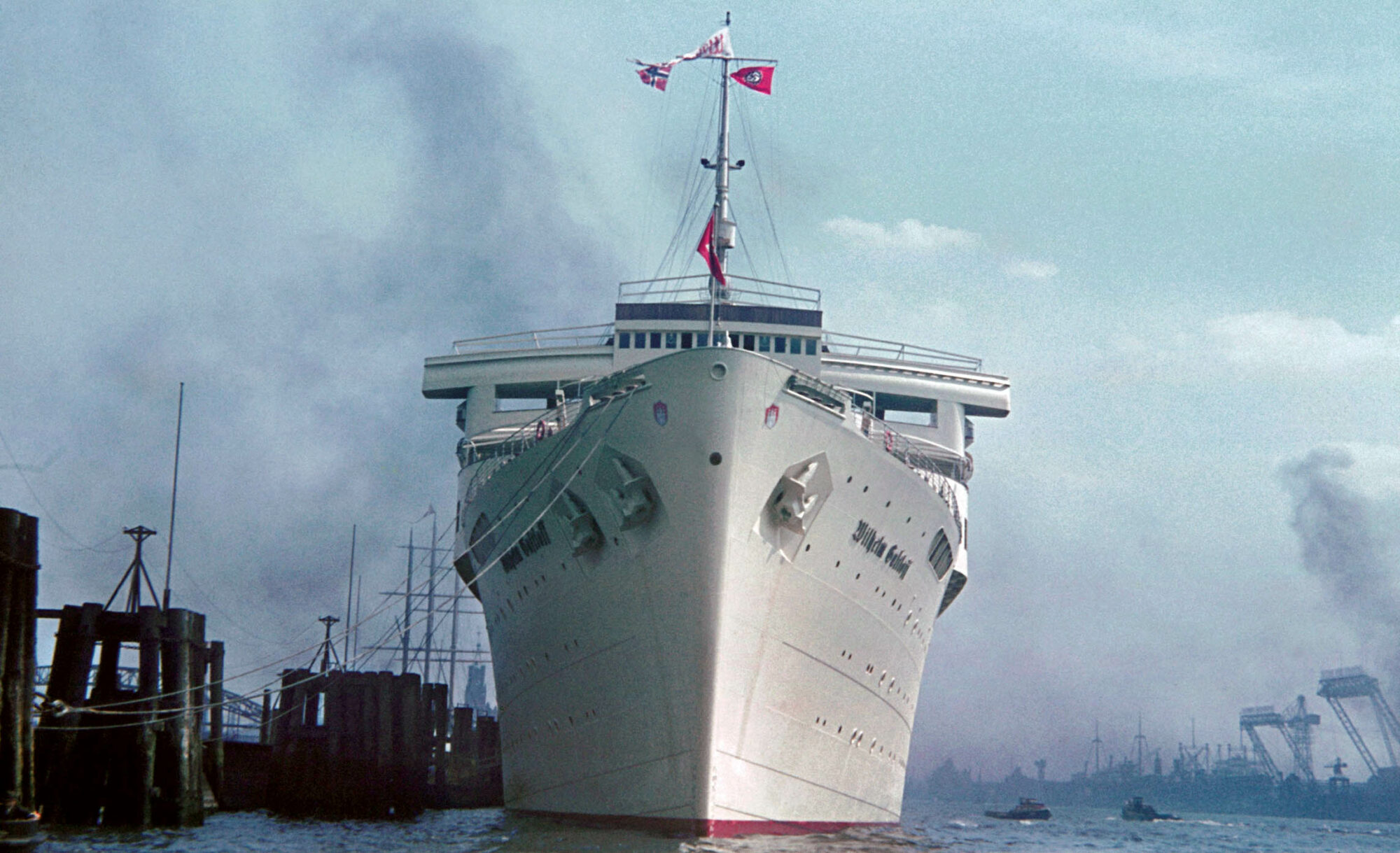
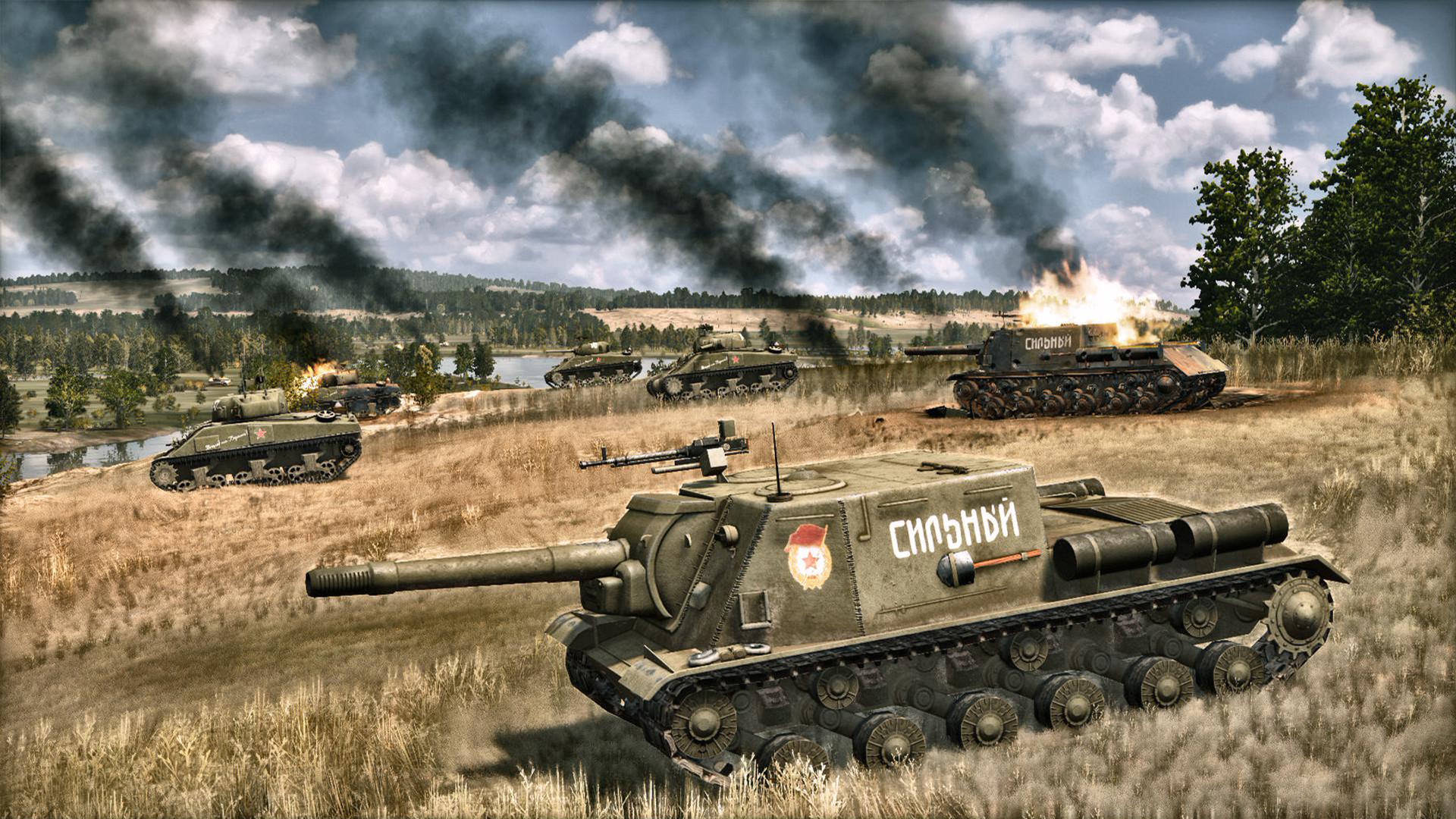
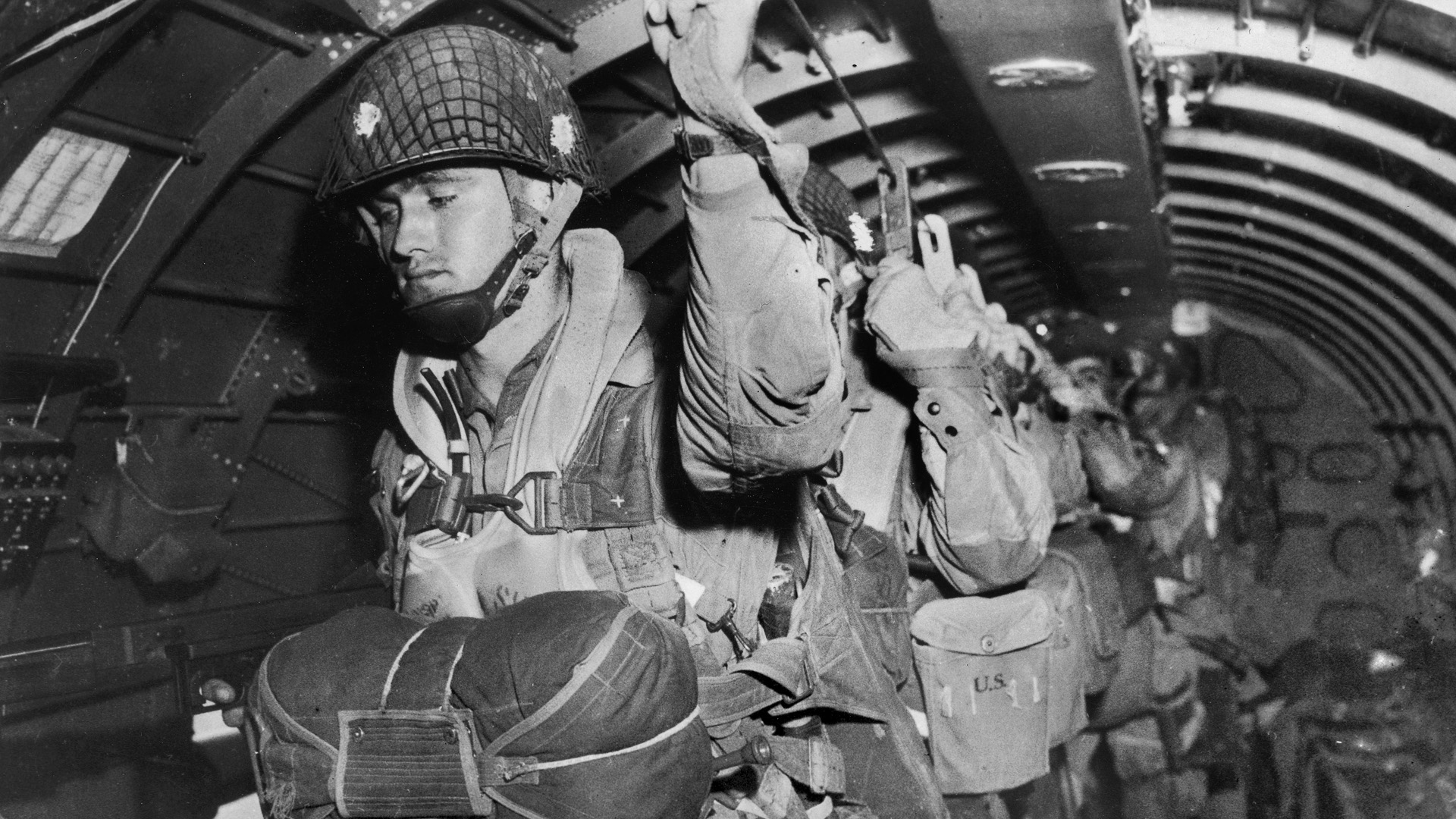
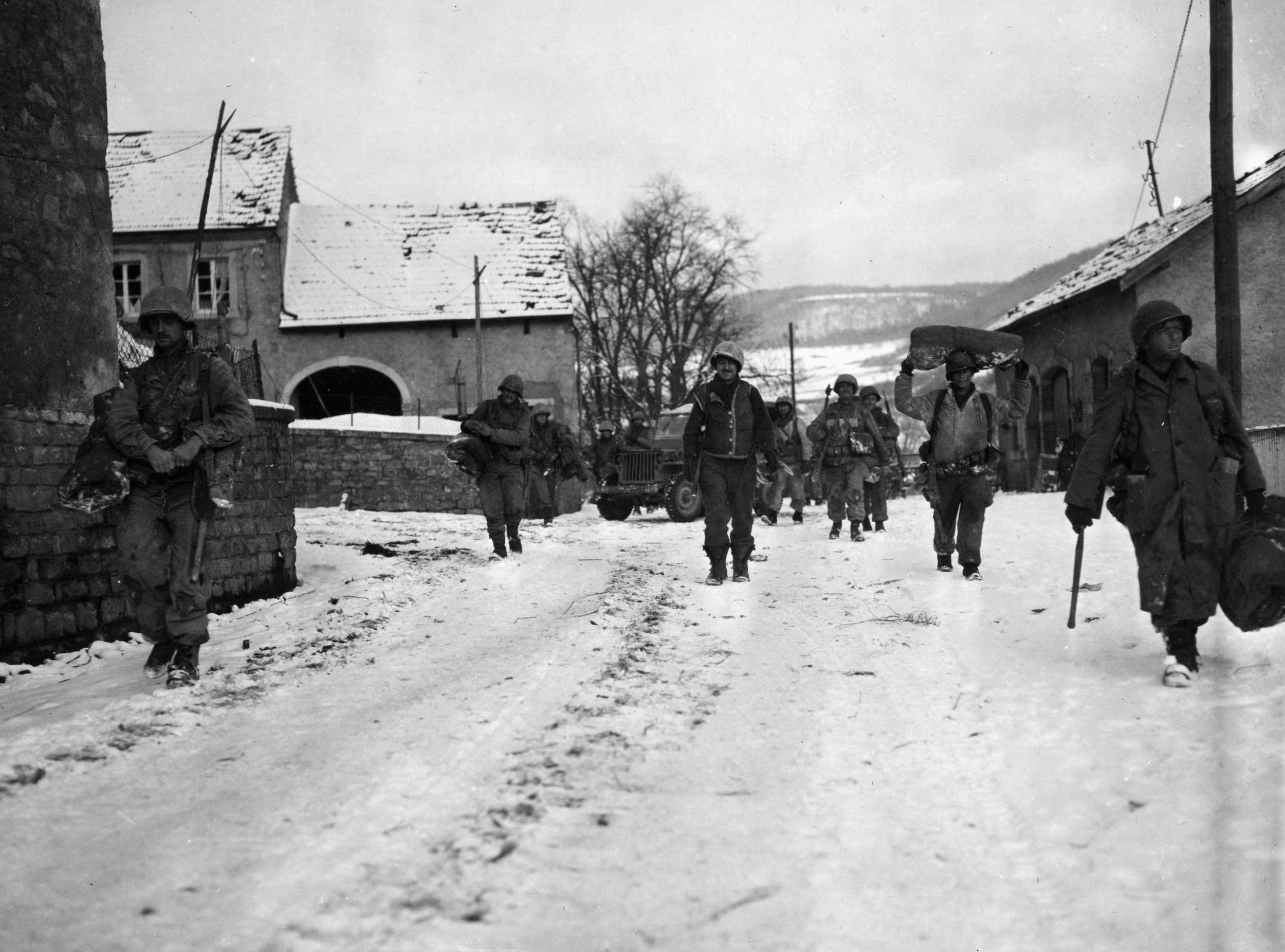
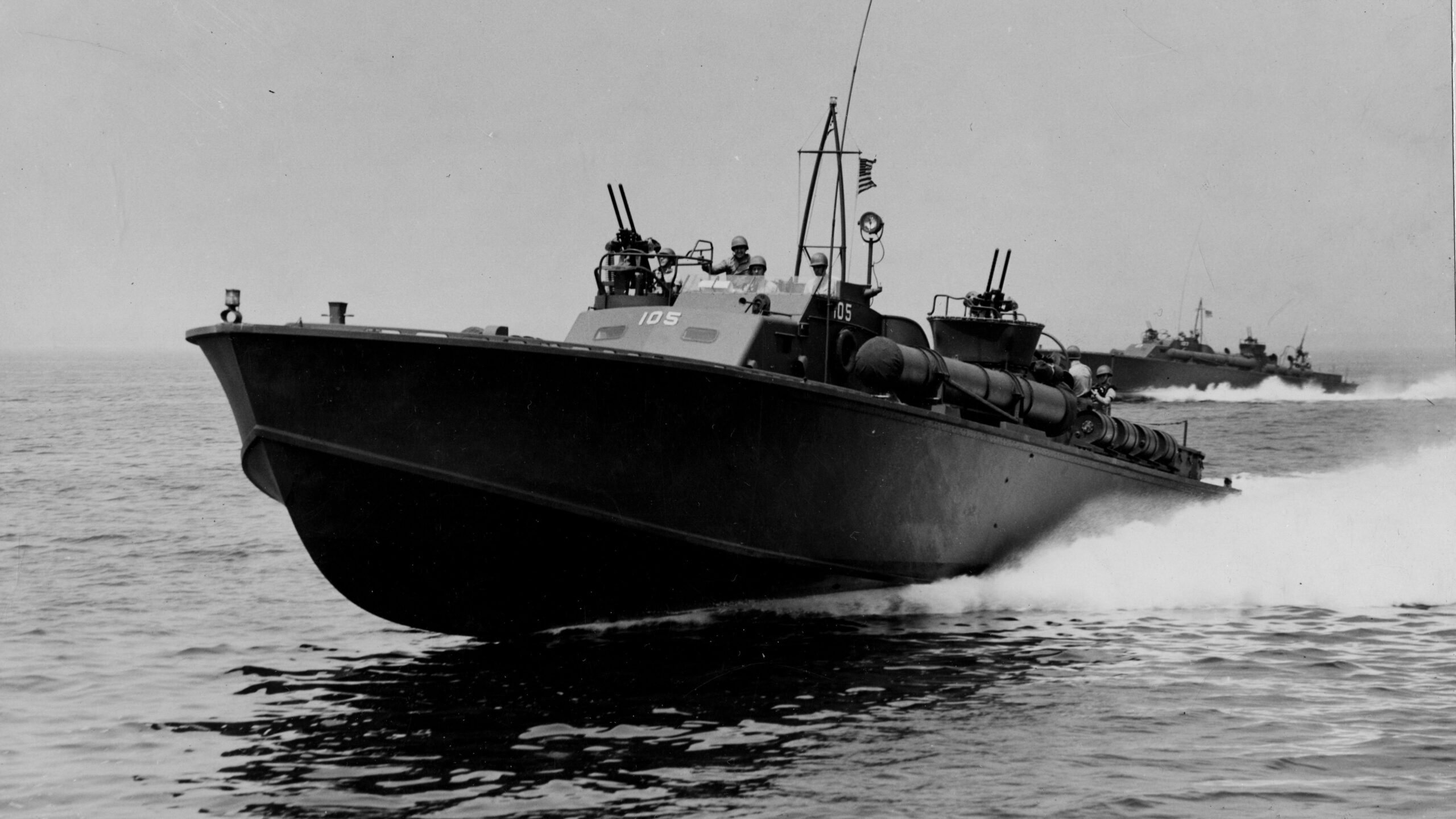
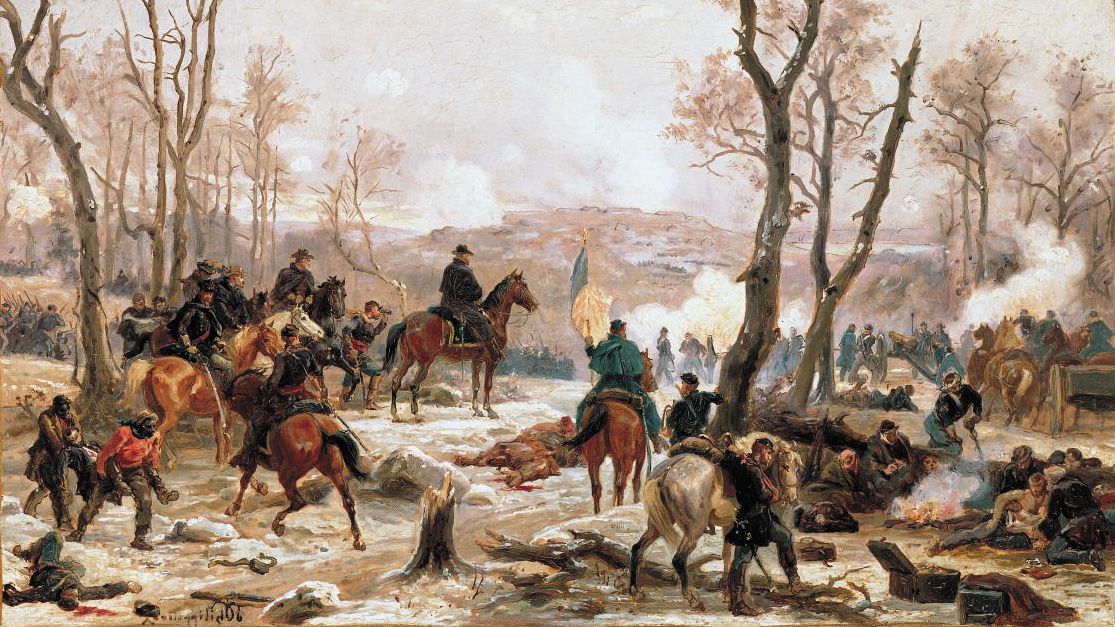
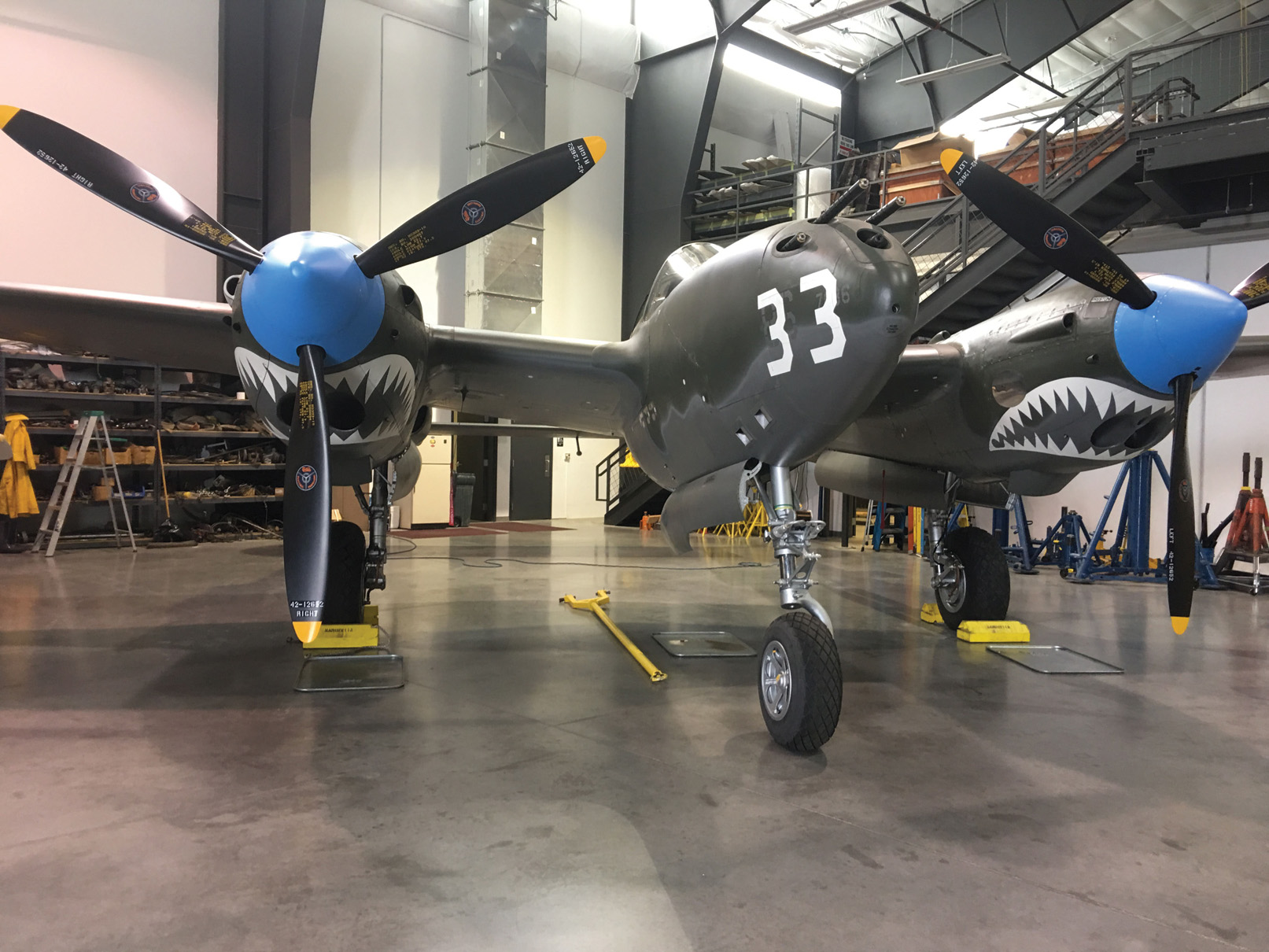
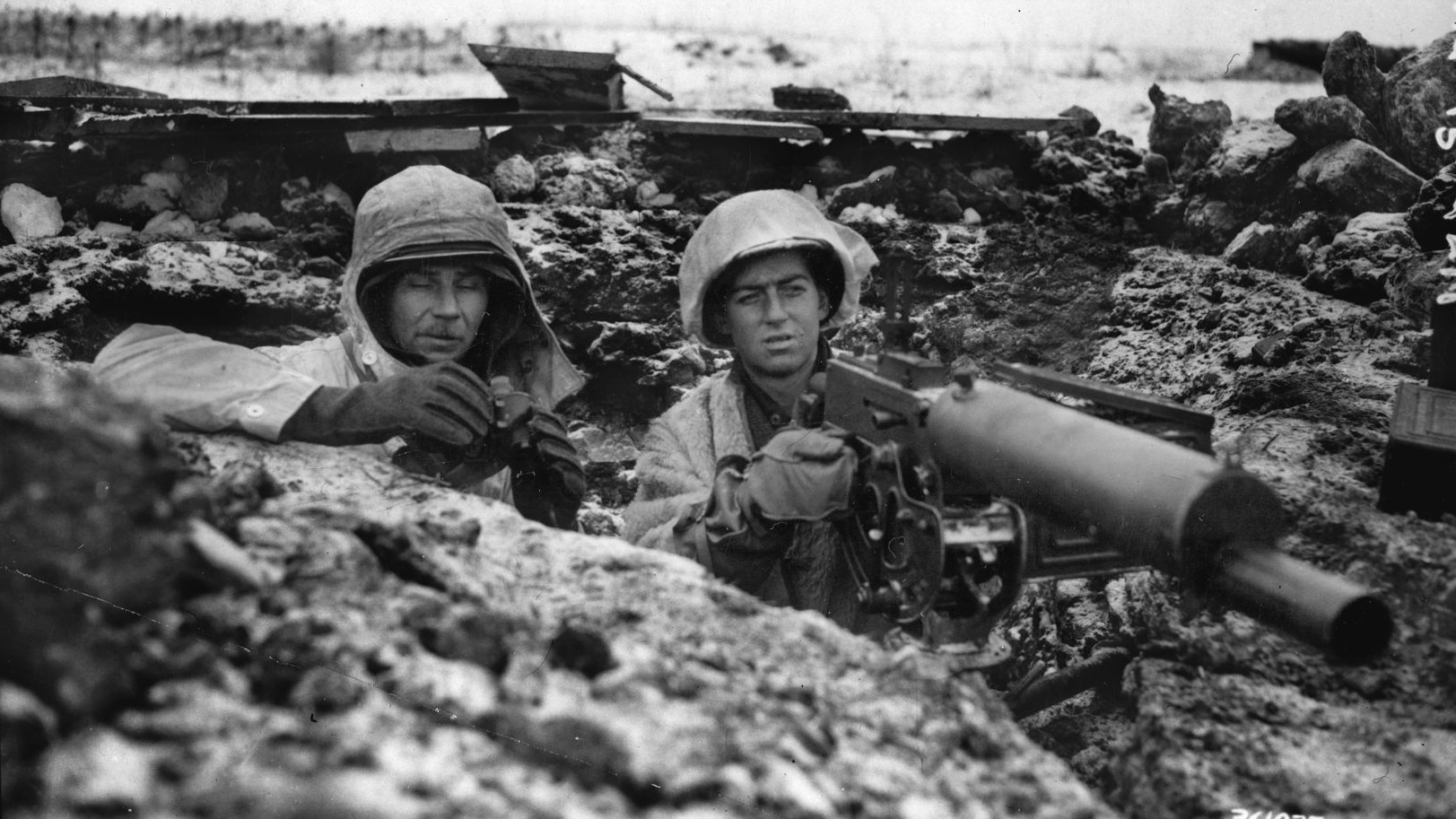
Join The Conversation
Comments
View All Comments